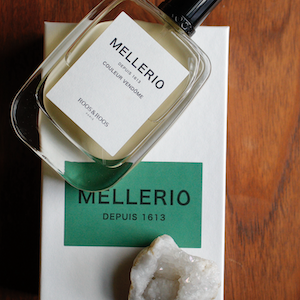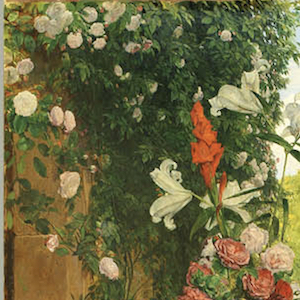Creative Together
By Indi Stilling
The 20th century was home to a plethora of artistic movements that have helped to build the creative world that we know today. Whilst we are currently in the age of modernism where anything goes, over the last 100 years there was a huge range of movements each with its own unique styles and manifestos. Whilst some lasted only a few years, others spanned decades. Some we remember more than others. Some remained in the art world, whilst others branched out into other realms of creativity including furniture design, architecture and even music; a unity of style across creative genres. As this century unfolds and we look back to the past, we learn more about each style and its role in society. So which movements united the different elements of creativity to make their mark on the art world?
Find out in Creative Together here.

Art Nouveau
This ornamental style of art flourished between 1890 and 1910. It paved the way for what would be an incredible century of art. Characterised by the use of natural shapes and long organic lines, these elegant shapes typically took the form of flower stalks and buds among other natural elements. These expressive lines were influenced by famous painters of the day Paul Gauguin and Henri de Toulouse-Lautrec.
Within this style there was an emphasis on contours and lines above anything else. These lines, typically drawn in various shades of black, were layered above more muted hues of green, brown, yellow and blue. The most notable patterns from this time were created by William Morris.
These natural designs differ from the previous movements in the 19th century. Whilst the paintings prior focused on portraits and realism, the Art Nouveau movement focused more on ornate decorative details. You can, however, draw comparisons between the natural elements of the Impressionist work and the elements in this style.

Art Nouveau firmly planted itself in the history books by being one of the few styles that was represented across nearly all forms of visual and material media. It helped to narrow the gap between the fine and applied arts.
In graphics and design, this style was used to promote everything from new technologies to bars and restaurants. The aim was to showcase the vitality of modern life. The movement’s influence on graphic design can even be seen today, as they raised the simple poster from being advertisements seen in passing to instead being pieces of high art to be admired.
The architecture from this time was grand. Not just in size but also in appearance. Taking the curved lines from the natural elements as inspiration, they combined materials to create these buildings. By using iron structures and glass panels they could replicate this natural feeling. These buildings were typically characterised by the use of terracotta and colourful tilework.
It was not just the exterior that was worked on in this movement, but the interior as well. Similar to the busy works of William Morris, interior design in this day strove to ensure that every surface was filled whilst also keeping a sense of harmony. This curved design that you typically see in the natural grain on a piece of wood was replicated in the spaces. Furniture featured handcrafted carved wooden designs and irregular corners, resembling all the contours in the designs of this time.
It is interesting to note that art nouveau painters are few and far between. The movement is much better known for its use in other elements of art. But the paintings and illustrations by people like Gustav Klint in his Golden Phase, Aubrey Beardsley and Alphonse Mucha still featured all of these curvaceous elements and muted colours.
During this time there was a big gap between decorative/applied art and the fine arts like painting and sculpture. The latter was traditionally seen as a purer expression of art and therefore of higher importance. However, this movement had a huge breadth. It did not just focus on the finer forms of art but instead encompassed everything. It showed that art could be for everyone in any discipline. From graphics to glasswork and furniture to fine art.
This is why this movement is seen as being the precursor to modern art.

Mid-Century Modern
The Mid-Century Modern style may be aesthetically the opposite of the Art Nouveau movement but it follows the same pattern.
This era covers 1930 through to 1965. As opposed to being an art movement in itself, it encompassed a variety of movements in art around the middle of the 20th century. It is typically described as art and design that has an impulse toward clean lines and simple geometry.
The term Mid-Century Modern was coined by Cara Greenberg to describe a particular style of architecture and furniture design that was prominent during the post-World War II years. This style and the accessories that accompanied it were created during the exuberance period when American soldiers came home, the economy boomed and new homes were being built across the country. The style naturally evolved out of the needs of the population at the time.
However, this movement was not just limited to design within the home. It stretched across to graphic design and the fine art world encompassing movements like Abstract Expressionism and Pop Art.
This movement was all about form following function.

It was not all about decorative elements like the movements prior to this. Gone were all the ornate frills and instead all you could find were simplistic geometric lines. Its roots were planted deeply in functionality, cleanliness and simplicity. The population was entering the post-war modernist world, so the work of this time had to embody these needs and wants.
In the graphic design world, they took heavy inspiration from the Bauhaus movement in the decades prior. That movement focused on a geometric and abstract style and featured little to no emotion or sentiment. Abandoning all unnecessary decoration and patterns, they instead chose to create simplistic 2D compositions using a small range of colours. No longer did they want to create works of realism, instead they wanted simplified forms so that everything became ‘purer’. Everything that was put on the page had to have a function.
The design of the time was not necessarily about creating a beautiful piece of art. It was about problem-solving. This works perfectly in the context of the home. Furniture and interiors were created to solve any household problems in order to create a space that is not only harmonious and practical but also looks clean.
The furniture has a distinctive look. Taking on a utilitarian look by combining metal and wooden elements, it is typically uncomplicated and obviously functional. Many pieces often had the ability to be stacked, folded and bent to fit perfectly into whatever space it was needed in. This allowed everything in the home to be rearrangeable and interchangeable.
The architecture of this time also expanded on this. They similarly used geometric lines to create open-plan spaces with flat roofing. A key feature of these buildings was big windows to invite as much light into the spaces as possible. Living areas were built with these large expanses of light in order to encourage a connection to nature for its inhabitants. The idea was to create this indoor-outdoor experience by bringing nature indoors.
On the other hand, the paintings from this era vary a little. Because this term encompasses a few different art movements you, therefore, get a range of art. From Jackson Pollock in the Abstract Expressionist movement to Andy Warhol’s Pop Art pieces, you get a bit of everything. This also extends into the sculptures of the time as well, there is a variety of styles.

Surrealism
Lastly is the Surrealist movement which not only united everything within the art realm but also the literary and philosophical movements as well.
Starting in the 1920s, this movement was born during an interwar period of uncertainty where there was a collective sense of trauma and confusion because everything had been turned upside down. There was a unanimous feeling of loss and yearning. People wanted something they could escape into. Surrealist design fitted this gap in the market perfectly.
Creating works of art using ideas from their unconscious minds resulted in outlandish and perplexing imagery. They were exploring the truth beyond realism.
By using this fantasy and dreamlike imagery, the artists were then able to generate works through a variety of different media. These pieces exposed their inner minds in ways that are both symbolic and eccentric. Through this process, they were able to uncover their own anxieties and treat them analytically through means visually.

While this movement may be best known for its mind-boggling works of art that do not make sense, by the likes of Rene Magritte and Pablo Picasso, it did also expand into the world of interiors.
British arts patron Edward James transformed his West Sussex home in the 1930s into his very own surrealist world. Taking the eccentric and nonsense qualities of the surrealist art movement, he had his walls covered in swirls and the ceilings covered in clouds, enough to make anyone feel dizzy if they look at it long enough.
In terms of furniture, it was equally as eccentric. One of the best-known pieces from the time is the Lobster Telephone created by Salvador Dali. This uncommon combination of objects created something that is both playful and menacing. Additionally, James’ house also featured the famous sofa he created that was shaped like a pair of lips. Whilst it may not be the most comfortable piece of furniture, it looked like a piece of art.
Are these pieces then classed as sculptures or pieces of furniture?
Unlike the mid-century modern ideals of functionality, this movement was definitely more about the visuals and the subconscious meanings behind the creations.
Each of these movements has made history with its unique style. However, they share the similarity of uniting all the realms within the art world and more. Instead of being completely separate things, designs within furniture, architecture, fine art and even literature became united within these movements. By using each of these styles in more than just the art industry, it expands its reach to more people outside the art world.
They become more than just visual movements. They become more than just something you can see when you go into a museum. Instead, they were lifestyles that you could live within and experience.
You could look at a gorgeous William Morris print on your wall which is covered in an ornately patterned wallpaper whilst sitting in your handcrafted wood-carved chair. You could live and breathe the ideals of each of these movements.
This is what makes these movements so iconic and influential to art today is partly that they crossed genres. This rich history of artistic movements has pathed the way for life today in this era of modernism we are in.
If you liked this then check out Uncovering Surrealism
.Cent Magazine London, Be Inspired; Get Involved



